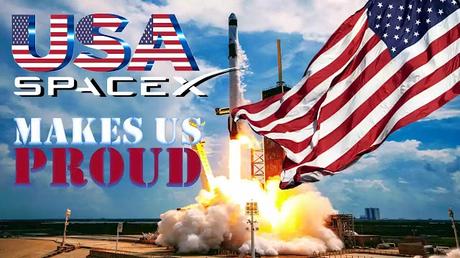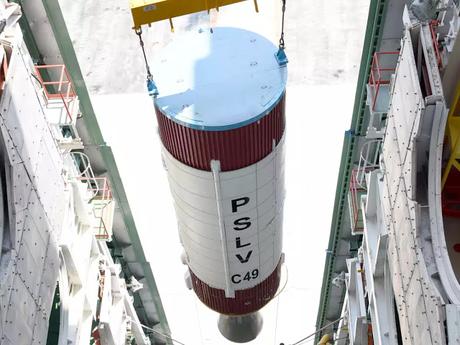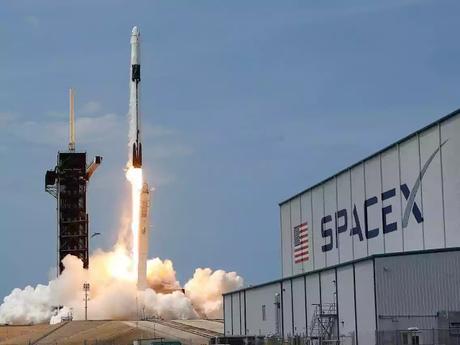
Today we will be discussing something which we should be really proud of as SpaceX and the United States both have again represented them as the topper in the World Space Industry!! In 2020, out of 114 orbital launches attempts of this planet 104 launches were successful.
Ten launch attempts were failed which was double the number of launch failures that happened in 2019. In the year 2019, 97 flights became successful from the total worldwide 102 orbital launch efforts.
We all know that the world is presently cursed by the Covid Pandemic, which has seriously threatened human beings in all the phases and turnabouts of life. The space industry is not outside of this. Even though the global pandemic weakens the infrastructure, yet the 114 launch attempts of 2020 has tied up with the year 2018 for the most orbital launches worldwide.
The United States along with their launch providers(mainly SpaceX) carried out forty-four missions in 2020 to place payloads in Earth orbit or in the depth of space. Out of these 44 missions, forty missions were successful, placing the U.S. in a leading position in the space industry.
Virgin Orbit and Astra both newcomers to the U.S. small satellite launch business, also carried out their first missions in 2020. In 2020, SpaceX has topped over all the other launch providers. SpaceX has successfully completed their twenty-five orbital missions that deployed nearly thousand of satellites for the company’s Starlink internet network.
SpaceX has also sent satellites to other companies.
Notable flights of SpaceX were Demo-2 mission, Crew Dragon spaceship mission (Crew-1), a couple of space station resupply missions, and three launches of national security payloads (NRO) into orbit for the U.S. government. SpaceX completed all the twenty-five orbital missions using its Falcon 9 rocket. Not only that, but SpaceX has also reused their boosters for twenty missions out of all the twenty-five launches. SpaceX has flown one first stage booster five times in 2020.
After SpaceX and other U.S. launch providers, China comes on next place covering about thirty-five launch successes out of thirty-nine orbital launch attempts. China has four launch failures throughout the year 2020.
In those failures the first one occurred inMarch when a problem arose during the first launch of the Long March 7A rocket, the second failure happened in April when a Long March 3B failed with the Indonesian Palapa N1 communications satellite, the third failure was done in July due to problems during the launch of China’slight-class Kuaizhou 11 and the last failure was due to problem in launching Kuaizhou 1Arockets in September.
The most notable successes for China’s space program in last year comprised of launches of the Tianwen 1 rover in July to Mars and the whole journey of Chang’e 5 lunar sample collection mission in December. Russia’s space program comes just afterU.S. and China.
Russia completed seventeen successful launches of Russian-built rockets in 2020, whereas SpaceX alone as a company of U.S. completed twenty-five missions. Out of those seventeen launches in 2020, fifteen were conducted with the Soyuz launcher. Russia’s heavier Proton and Angara launch vehicles both have completed one mission in 2020.
The Russian Soyuz missions had also launched two crews to the International Space Station (ISS), three groups of satellites for OneWeb’scommercial broadband network, and two Progress logistics flights to the station.
Soyuz rockets also launched on two missions with Emirati and French military reconnaissance satellites from the European operated GuianaSpace Center in French Guiana. Japanese vehicles launched less than one-sixth of SpaceX launches in 2020.
The good thing to notice is that all of the missions went successful. Japan’s four orbital launch attempts held last year consisted of three flights of the Mitsubishi Heavy Industries’ “H-2Arocket”. The H-2A rocket launched two Japanese military satellites into orbit, these completed the first two missions. The third mission of the year was deploying the Hope Mars orbiter for the United Arab Emirates (UAE).
The fourth launch of the year 2020 was also the ninth launch of the most powerful H-2B rocket. It was a dual-engine rocket. In May, the H-2B rocket lifted off Japan’slast first-generation HTV cargo freighter with a large number of supplies for the international space station.
India’s space launch program was totally halted due to the COVID-19 pandemic.

In spite of that India has launched two successful orbital missions in 2020. India performed two successful missions with its Polar Satellite Launch Vehicle (PSLV) in the months of November and December. Both delivered their payloads to orbit.
Iran’s success rate is almost fifty percent as they have conducted two orbital launch missions in February and April and one of them was failed while another one was successful. Israel launched a single mission to deliver a military spy satellite into orbit. Israel’s Shavit launcher successfully deployed their “ Ofek 16 military surveillance satellite” into orbit.
United Launch Alliance (a joint venture between Boeing and Lockheed Martin) have successfully accomplished six missions last year. Out of the six missions, five missions were carried out along with ULA’s Atlas 5 rocket to deploy national security payloads into orbit, to launch the European-built Solar Orbiter science mission, and sent NASA’sPerseverance rover to Mars.
The last mission of the total six missions was accompanied by a Delta 4-Heavy rocket which happened in December. It deployed a top-secret spy satellite for the National Reconnaissance Office (NRO). Rocket Lab, a company of New Zealand, who invented and created the Electron rocket have conducted seven missions in 2020.
Six of them were successful, but unfortunately, one was failed. Rocket Lab has its headquartered in Long Beach, California. They construct all engine equipment and other mechanisms in the United States. However, they assemble and launch their rockets from New Zealand. Electron rockets are intended to start their launching from a new launchpad located in Virginia, in 2021.
Northrop Grumman has completed their three launches from the Mid Atlantic Regional Spaceport in Virginia in 2020. The three launches of Northrop Grumman comprises of two cargo launches to the International Space Station using Antares rockets and a solo flight of a solid-fuelled Minotaur 4 rocket with satellites for the National ReconnaissanceOffice. Arianespace, a European company launched five times from French Guiana in 2020. European made launchers have reached orbit four times out of five attempts.
Three heavy-lift Ariane 5 rockets successfully launched from French Guiana with commercial communications satellites for B-SAT, Sky PerfectJSAT, Eutelsat, Intelsat, and the Indian Space Research Organization (ISRO), a South Korean weather satellite, and a satellite servicing vehicle for Northrop Grumman’s ancillary space Logistics. Richard Branson, a business mogul had founded the Virgin Orbit.
This Virgin Orbit performed the first test flight of its airborne-launched LauncherOne rocket off the coast of Southern California in the month of May 2020. Astra, another newcomer smallsat launch company, launched two of its orbital-class rockets on test flights from the launch site of Alaska. The Virgin Orbit and Astra test flights all failed before reaching the targeted orbit, but the companies say they gathered enough data to set up for additional launches in the year 2021.

The smaller Vega rocket program of Italy also undergo one failure in the two launch attempts in 2020. The space launch stations from where launches were attempted in 2020 are:- Cape Canaveral Space Force Station (Kennedy Space Center)in Florida; Jiuquan in China; Xichang space Center in China; De Bo 3 platform near YellowSea; Baikonur Cosmodrome in Kazakhstan; Vandenberg Air Force Base in California; Mahia Peninsula in New Zealand; Vostochny Cosmodrome of Russia; Pacific Spaceport Complex of Alaska, Mid-AtlanticRegional Spaceport in Virginia; Satish Dhawan Space Center of India; Plesetsk Cosmodromeof Russia; Palmachim Airbase of Israel; Guiana Space Center in French Guiana; Shahroud in Iran; Tanegashima Space Center in Japan; Imam Khomeini Spaceport of Iran and Mojave Air and Space Port.
The Space Launch Complex 40 at Cape CanaveralSpace Force Station of Florida was the most randomly used launchpad throughout the world in 2020 covering about thirty launches with no failures (fourteen SpaceX Falcon 9 missions were launched from this Space station). Before 2020, the previous record for launches carried out from the Space Coast which had reached orbit was twenty-nine.
It happened in 1966. (There were thirty-one orbital launch attempts from Cape Canaveral that year. Not only that, but two suborbital tests flights of the Apollo era Saturn 1B launcher were also launched. Thus a total of about thirty-three space launches were held from Florida in 1966) China’s launch stations placed at Jiuquan and Xichangeach accomplished thirteen satellite launches last year.
The Russia Plesetsk Cosmodrome, the Baikonur cosmodrome in Kazakhstan, Rocket Lab’s self-operated launch site in New Zealand, and the Guiana Space Center in South America each had carried out seven launches last year.
Viewing all the launches around the world, we come to the conclusion that SpaceX is the only company that has completed numerous missions with its sole strength. It’s alone successful launch cadence overtakes the list of successful launches of many developed countries.
Photos Credit: Google Images
